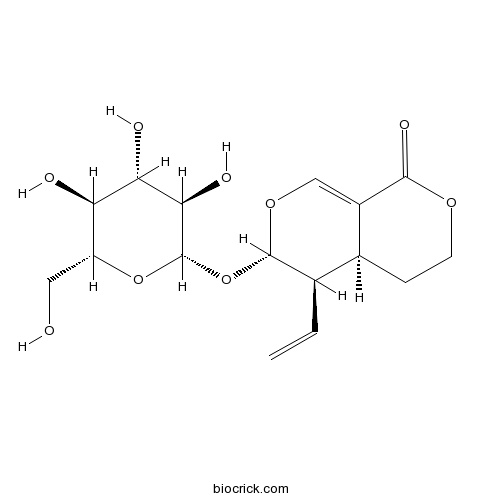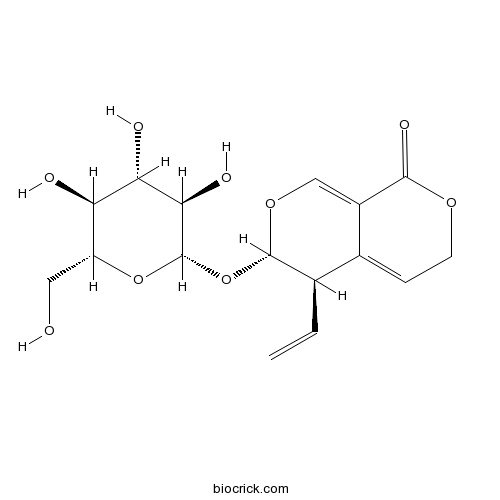Gentiana straminea
Gentiana straminea
1. The products in our compound library are selected from thousands of unique natural products; 2. It has the characteristics of diverse structure, diverse sources and wide coverage of activities; 3. Provide information on the activity of products from major journals, patents and research reports around the world, providing theoretical direction and research basis for further research and screening; 4. Free combination according to the type, source, target and disease of natural product; 5. The compound powder is placed in a covered tube and then discharged into a 10 x 10 cryostat; 6. Transport in ice pack or dry ice pack. Please store it at -20 °C as soon as possible after receiving the product, and use it as soon as possible after opening.
Natural products/compounds from Gentiana straminea
- Cat.No. Product Name CAS Number COA
-
BCN6219
Sweroside14215-86-2
Instructions

-
BCN4909
Gentiopicroside20831-76-9
Instructions

[Chemical Constituents from Roots of Gentiana straminea of Tibetan Medicine].[Pubmed: 30080009]
To investigate the chemical constituent from the roots of Gentiana straminea.
An Intronless β-amyrin Synthase Gene is More Efficient in Oleanolic Acid Accumulation than its Paralog in Gentiana straminea.[Pubmed: 27624821]
Paralogous members of the oxidosqualene cyclase (OSC) family encode a diversity of enzymes that are important in triterpenoid biosynthesis. This report describes the isolation of the Gentiana straminea gene GsAS2 that encodes a β-amyrin synthase (βAS) enzyme. Unlike its previously isolated paralog GsAS1, GsAS2 lacks introns. Its predicted protein product was is a 759 residue polypeptide that shares high homology with other known β-amyrin synthases (βASs). Heterologously expressed GsAS2 generates more β-amyrin in yeast than does GsAS1. Constitutive over-expression of GsAS2 resulted in a 5.7 fold increase in oleanolic acid accumulation, while over-expression of GsAS1 led to a 3 fold increase. Additionally, RNAi-directed suppression of GsAS2 and GsAS1 in G. straminea decreased oleonolic acid levels by 65.9% and 21% respectively, indicating that GsAS2 plays a more important role than GsAS1 in oleanolic acid biosynthesis in G. straminea. We uses a docking model to explore the catalytic mechanism of GsAS1/2 and predicted that GsAS2, with its Y560, have higher efficiency than GsAS1 and mutated versions of GsAS2 in β-amyrin produce. When the key residue in GsAS2 was mutagenized, it produced about 41.29% and 71.15% less β-amyrin than native, while the key residue in GsAS1 was mutagenized to that in GsAS2, the mutant produced 38.02% more β-amyrin than native GsAS1.
Chloroplast genome structures in Gentiana (Gentianaceae), based on three medicinal alpine plants used in Tibetan herbal medicine.[Pubmed: 27422574]
The genus Gentiana is the largest in the Gentianaceae family with ca. 400 species. However, with most species growing on the Qinghai-Tibet plateau, the processes of adaptive evolution and speciation within the genus is not clear. Also, the genomic analyses could provide important information. So far, the complete chloroplast (cp) genome data of the genus are still deficient. As the second and third sequenced members within Gentianaceae, we report the construction of complete cp sequences of Gentiana robusta King ex Hook. f. and Gentiana crassicaulis Duthie ex Burk., and describe a comparative study of three Gentiana cp genomes, including the cp genome of Gentiana straminea Maxim. published previously. These cp genomes are highly conserved in gene size, gene content, and gene order and the rps16 pseudogene with exon2 missing was found common. Three repeat types and five SSR types were investigated, and the number and distribution are similar among the three genomes. Sixteen genome divergent hotspot regions were identified across these cp genomes that could provide potential molecular markers for further phylogenetic studies in Gentiana. The IR/SC boundary organizations in Gentianales cp genomes were compared and three different types of boundaries were observed. Six data partitions of cp genomes in Gentianales were used for phylogenetic analyses and different data partitions were largely congruent with each other. The ML phylogenetic tree was constructed based on the fragments in cp genomes commonly available in 33 species from Lamiids, including 12 species in Gentianales, 1 in Boraginaceae, 10 in Solanales, and 10 in Lamiales. The result strongly supports the position of Boraginaceae (Ehretia acuminata) as the sister of Solanales, with the bootstrap values of 97 %. This study provides a platform for further research into the molecular phylogenetics of species in the order Gentianales (family Gentianaceae) notably in respect of speciation and species identification.
Authentication of Gentiana straminea Maxim. and its substitutes based on chemical profiling of iridoids using liquid chromatography with mass spectrometry.[Pubmed: 27187930]
None


